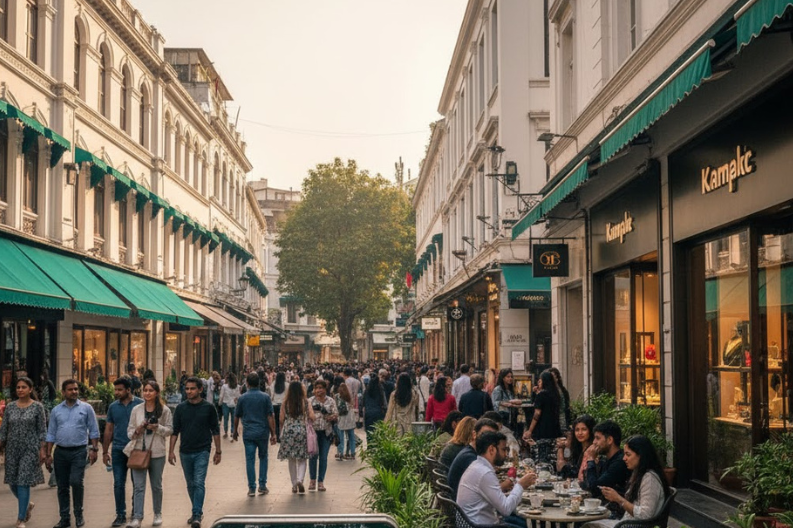Khan Market in central Delhi has strengthened its reputation as India’s costliest shopping street. It now ranks 24th on the global list of expensive retail areas. A new report from Cushman & Wakefield shows a 3% rise in rent this year. The cost has reached $223 per square foot, or about Rs 19,754. Although it slipped from 23rd to 24th place, it still remains the most expensive high street in India. It even stays ahead of premium locations in Mumbai, such as Bandra and Kemps Corner.
The market attracts well-known personalities, international visitors, and local shoppers. Many come for its stylish boutiques, luxury cafés, and specialty bookstores. Global brands also choose Khan Market because it offers strong footfall and great visibility. India’s retail sector has grown by about 6% this year. This growth has increased the demand for high street locations like this one.
Gautam Saraf, Executive Managing Director at Cushman & Wakefield, said that India’s high streets continue to show strength. He added that rising wealth and changing customer needs push global and Indian brands toward premium markets. With fewer malls in India, high streets now play a major role in retail expansion. They account for almost half of the country’s leasing activity.
Shopping habits are changing too. More people now prefer premium brands and unique experiences. Because of this trend, retailers in Khan Market offer more luxury services and exclusive products. These upgrades help the market stay competitive with global shopping streets.
Even so, Khan Market ranks far below the world’s top luxury zones. New Bond Street in London now holds the number one spot. Its rent has jumped to $2,231 per square foot. Other top streets include Via Montenapoleone in Milan, Upper Fifth Avenue in New York, and Champs-Élysées in Paris. These areas host world-famous brands like Chanel, Cartier, and Jimmy Choo.
Khan Market, at rank 24, still stands out in the global scene. So, it reflects India’s growing economy and rising urban wealth. As Delhi continues to grow, the market may see more renovations and new premium stores. Many businesses also plan to redesign layouts and upgrade public spaces to improve the visitor experience.
The future of Khan Market looks bright. Better infrastructure, modern store designs, and improved facilities will create a more comfortable environment. These changes will also help preserve the market’s classic charm.
In conclusion, Khan Market’s rise as India’s costliest shopping street shows how its location, diverse shops, and wealthy customers shape its identity. So, with steady demand and regular improvements, it will remain one of the country’s top shopping destinations for many years.



